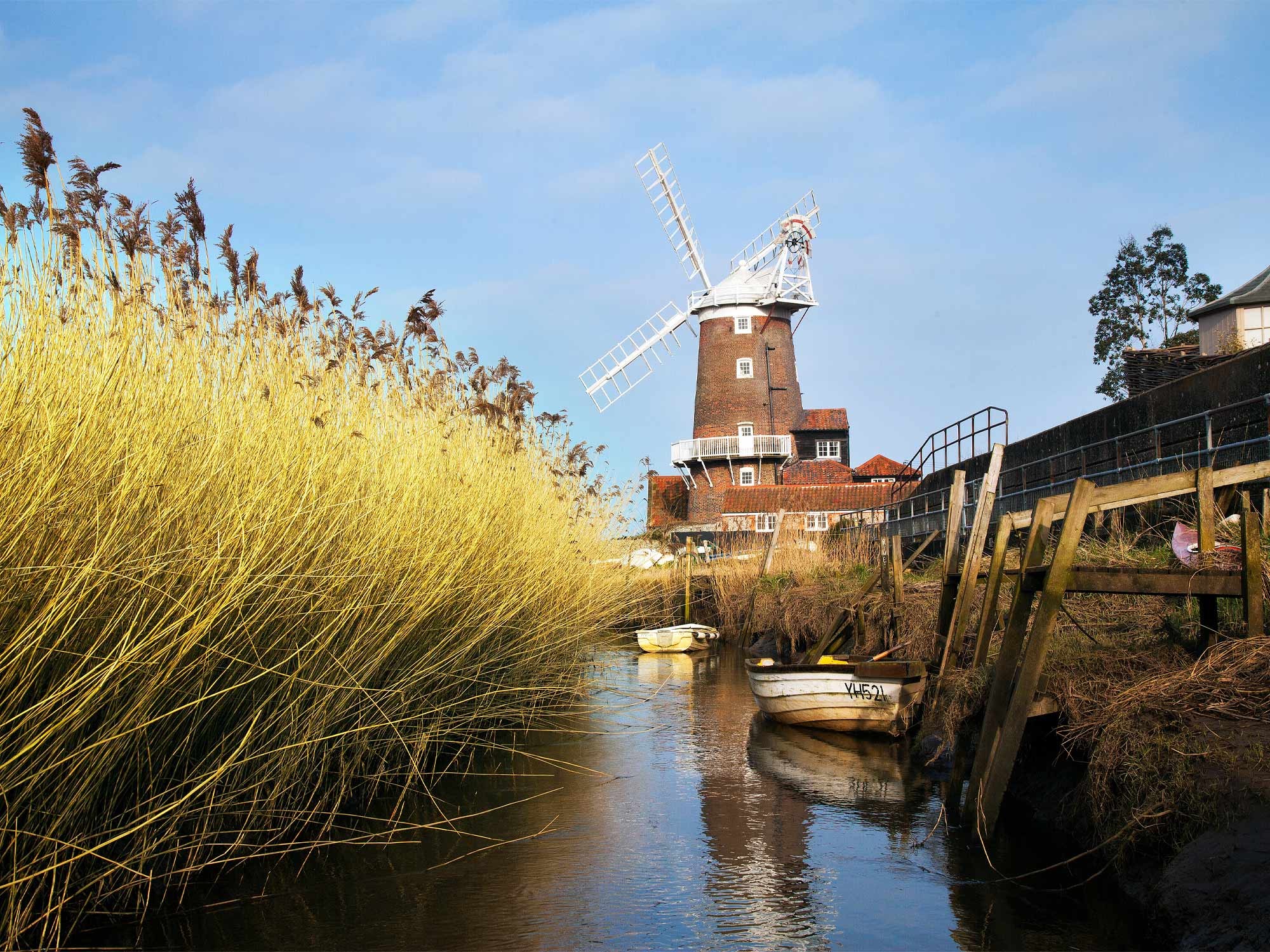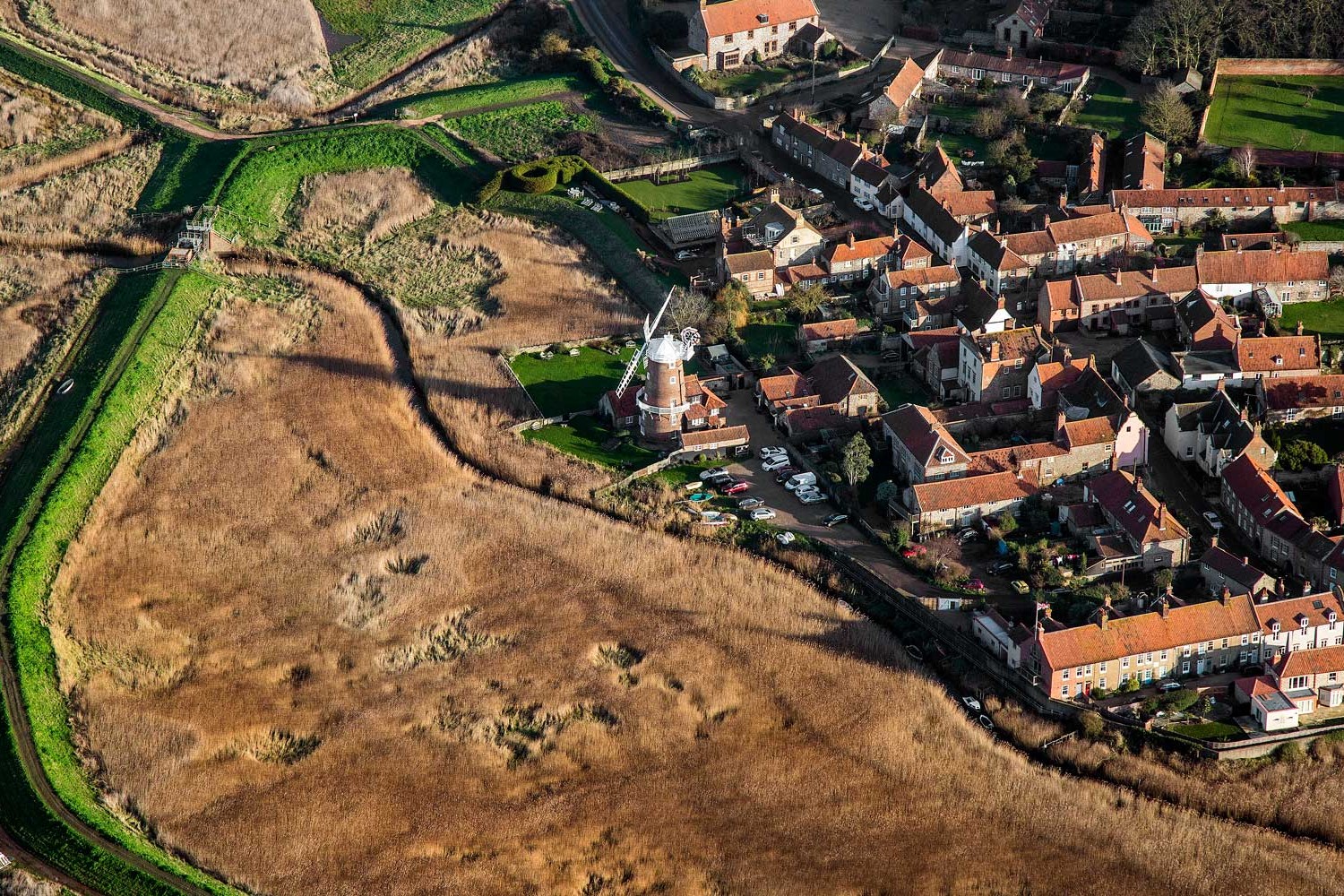
The tradition and the future of Cley Marshes
It’s been the centre of a reed-cutting industry for centuries, and it’s now been called the Great Barrier Reef of Norfolk. Home to an incredible variety of wildlife, there’s nowhere quite like Cley Marshes
The A149 coastal road winds through villages with tantalising views of the coastline between cottages and over the hedgerows until you arrive at Cley-next-the-Sea and gain your first real glimpse of the vast marshland edging the sea.
The seasonal changes are nowhere more discernible than at these marshes at Cley, where migratory birds have left for warmer climes and frost has taken the last leaf from the reed stalks – and where the current reed harvesting will continue until March.
Entrenched in North Norfolk’s history, reed cutting has always provided seasonal work when intensive agriculture has ceased during the winter months, and there’s plenty of activity among the marshes as cutters get to work clearing the beds.
Reed cutting is a centuries’ old occupation, with most of the harvest going to thatching and the remainder to local crafts and fence making. Traditionally cut with hook and scythe, some workers still prefer the hands-on method – although mechanisation in the form of huge grass cutters is becoming more regular.
Henry Randell, a local lobster and crab angler, is always happy to talk about the additional work he does alongside his father Mark, who’s Chairman of North Norfolk Reed Cutters Association. Together, they provide information to keep this important work in the forefront of the public eye.
“Reed cutting provides valuable seasonal work for fishermen and land workers,” says Henry. “Although mechanisation has taken a lot of the hand work away, I still like to use the old hook and scythe. A cutter will pick up a bundle roughly measured as three hand spans, which is then raked to clear out the old reed and debris and finally tied loosely with twine. A reed cutter can form anything up to 70 bundles a day.”

Traditionally, the stacks were left on the marshes to dry but are usually now taken away for storage. When cutting is finished, the Norfolk Wildlife Trust undertakes the necessary management work maintaining important wildlife habitat on what is their oldest nature reserve.
But beneath and beyond the marshes is Norfolk’s latest gem. A mere stone’s throw from the shore and around 20m below the surface lies what’s thought to be one of Europe’s largest chalk reefs.
Recently dubbed The Great Barrier Reef of Norfolk, Cley Marshes is the first in our region to be designated a Marine Conservation Zone, one of 23 such areas created around the country protecting conservation areas at sea – safeguarding habitats and species of national importance.
The unique Cromer Shoal Chalk Beds are home to a diversity of marine life and a varied range of submerged landscapes, inspiring many wildlife enthusiasts to visit the Cley Reserve.
The history of the reserve goes back to 1926 when the 400 acres of marshland at Cley were purchased by Dr. Sydney Long, a Norwich-based physician and enthusiastic naturalist, to be held in perpetuity as a bird breeding sanctuary.
Long set about establishing an organisation capable of managing the land for the wildlife, and in 1926 the Norfolk Naturalists’ Trust was born.
But the work to protect wildlife goes back even further than that.
The Society for the Promotion of Nature Reserves was the brainchild of Charles Rothschild, landowner, banker and naturalist, who wanted to safeguard the places where wildlife made its habitat – moors, fens, and meadows, all of which were under attack from modernisation.
In 1912, from his acquisition of 339 acres of wild fenland for the conservation of nature, a movement that would expand into a network of trusts acquiring new nature reserves was formed. One of the Trust’s most ambitious and latest projects is to manage habitats on a landscape scale bridging the gap between people and wildlife.
In the 1940s-50s, legislation was established to protect National Parks, Nature Reserves and Sites of Special Scientific Interest, one of which is the Cley Marshes cared for by the Norfolk Wildlife Trust. Cley is also designated a RAMSAR (wetland site) – held to be of International importance as waterfowl habitat.
On a rise above the coast road is the Simon Aspinall Education Centre, named in memory of local naturalist Simon Aspinall in recognition of his contribution to ornithology and natural conservation. The huge glass windows afford uninterrupted views of this vast marshland that will leave you breathless – there’s plenty to see whatever the season.
On this mile upon mile of Cley Marshes, the Reserve supports large numbers of wintering and migrating wildfowl and waders, bittern and marsh harrier – and every species of seabird nests in the reeds and marsh grass or wades contentedly in the pools.
So take a seat next to one of the telescopes and focus your eyes on one of the most spectacular views on the local coastline.
